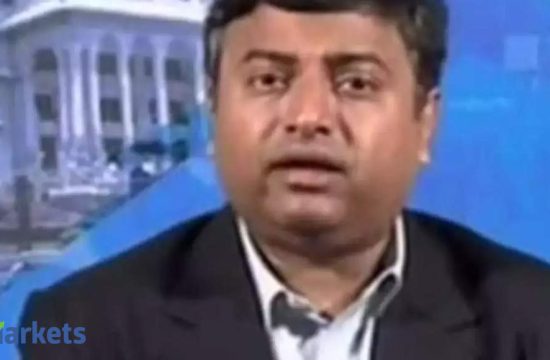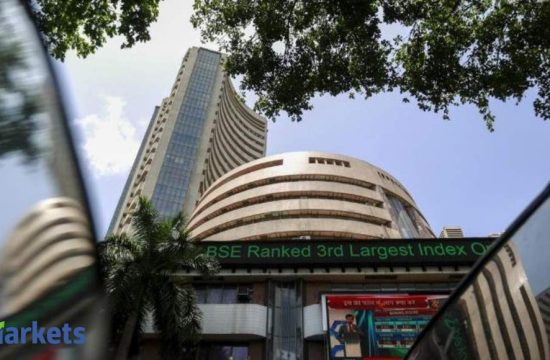
The fundamentals will catch up with the market over the next 6 to 12 months, says S Krishna Kumar, CIO.
If liquidity is abundant and there is going to be low interest rates for a long time, what is the end game now? Can one safely assume that the party will continue and markets will continue to show complete disregard for valuations?
I think you asked the same question in a different way. So the markets right now are driven by a lot of liquidity coming through from the US. The most important thing to observe at this point is the improving data that is coming through as we open up. We have seen a good experience in China in most sectors. They are back to near normal. The US, Europe and a lot of other countries have seen a fair bit of improvement in terms of their operating metrics across different parameters.
In India also in the last one month, we have been doing a lot of checks with corporates and channels to see what is happening. The commentary definitely from the NBFCs and banks have been far better in terms of collections and disbursements moving ahead. Also in the case of the automotive sector, dealerships are seeing walk-ins and a good amount of pent-up demand is coming through. So all in all the experience globally and in India will be the same. While supply normalises there will be demand that will come through. While, of course, it is not going to hit the same levels of pre-Covid immediately, it will be a 6 months to 12 months journey as month on month we improve in terms of numbers.
So the markets actually are not just driven by liquidity and I would beg to differ. I would also like to believe that there is a lot of improvement on the ground that we are noticing. While everybody is cautious and watchful, slowly and steadily the improvement is getting factored in into the prices; be it the frontline banks or the NBFCs or the mid and smallcaps. The stocks that have been beaten down 80-90% are seeing some pull back of 15-20%. So there is some normalisation that is happening and that is why we believe that the fundamentals will catch up with the market over the next 6 to 12 months and therein move on.
The question in the longer term is how the liquidity will unwind. Definitely as the global central banks see normalisation in their economies, they would start to definitely tighten the liquidity and rise rates, but from the commentary of the US Fed and central banks in Europe, clearly that is quite some time away. So right now there will be supportive liquidity conditions globally and a bit of risk on trade that is happening driven by the opening up of the economy and the good news that is coming through.
If markets have already moved in anticipation of earnings recovery, when the actual recovery happens, will markets come down?
The initial reaction that we saw in February-March of sheer panic pushed valuations to levels much below fundamentals’ intrinsic values. So there has been a bit of a catch up on that as the fear gave way to some caution. I think markets and valuations have normalised and then there is this leg up that we are seeing now, which is discounting a bit of the improvement that we are seeing. While I do agree that these levels are the way the markets are, the markets’ valuations are quite reasonable. I would find it difficult to justify a strong rally from here in the near term.
Of course, we will keep moving up slowly. So there could be a bit of correction in terms of time correction as we wait for more news flow to strengthen our case for the recovery. Of course, specifically there could be a lot of value in different sectors and stocks and hence in this kind of market move, after the sharp correction, we find that value will come back and value investing will play up and growth stocks will outperform. So the path of recovery we see is there will be initial value that will come back into the markets and then growth will take over after 6 to 12 months.
Sundaram has a large dedicated rural fund. We have been hearing a lot about the pickup of activity on the rural side. How are you working that theme in terms of pockets that you feel could benefit and how excited are you about the opportunity there?
I think in this current state of affairs, the good news is that the last one year has been good for agriculture and broadly rural incomes have been holding up and more efforts by the government to assuage the worries of the poor and the rural areas are helping. The good news is that this year the monsoons are good and the sowing area is going up. So what we do understand from the agri markets and rural areas are that things are a lot better than what was there a year back. So this really will be a very supportive factor for consumption broadly because there is a lot of base level consumption that comes through from the rural side in addition to the aspirational consumption that we always talk about as more and more of India becomes more aspirational and conscious of the up-scaling into the brands.
So that is positive from a medium term perspective on consumption, particularly the higher-end FMCG products and also the low-ticket consumer discretionary; appliances, the two wheeler and the tractor space is what we would play. More importantly, on the agrochemical side, the industry has been doing well in the last six months and we do believe that in the next 12 months, there is going to be continued demand uptick and pricing benefits that will come through for that space. Also, these companies in agrochemicals and speciality chemicals have another leg in terms of global supply chains and we have seen most of them being able to secure large contracts for supplies overseas. So that is a sector that we continue to remain optimistic about in the medium term.
What about telecom? How are you viewing the most recent developments?
Clearly in the last one year, consolidation across the industry with a lot of weaker players going out has been helpful. In a way that has also made the government more pro industry trying to help the industry to stay afloat and help the bank system to get back their dues from the sector. So I think that is the biggest change that we have seen in terms of the government coming into support the industry.
Along with that, more than just the pricing expectations on the telecom space and the value creation, the larger part of the play has been how these telecom companies could turn themselves into more internet plays and framework plays like Alibaba. So if you look at one of our leading companies, we are seeing a lot of investments from global majors coming in and they are not coming in for just telecom. They are coming in for more benefits of being invested in a platform player from where they can leverage the social connect, the payments enterprise, the ecommerce across the different categories like groceries, other retail, apparel and footwear and other things.
I think it opens up a whole host of enterprises that we could do through these telecom companies if you transform yourself, which Jio has proved. So I guess that is the biggest long-term story that has played out in the markets for the last three months.









